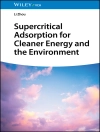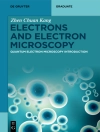Energy production and storage are central problems for our time. In
principle, abundant energy is available from the sun to run the
earth in a sustainable way. Solar energy can be directly harnessed
by agricultural and photovoltaic means, but the sheer scale of the
energy demand poses severe challenges, for example any major
competition between biomass production and food production would
simply transfer scarcity from energy to food. Indirect use of solar
energy in the form of wind looks also promising, especially for
those regions not blessed with abundant sunlight. Other modes such
as tidal and wave energy may well become important niche players.
Inorganic chemistry plays a decisive role in the development of
new energy technologies and this Volume covers some
promising modes of alternative energy production and storage that
minimize the atmospheric burden of fossil-derived carbon monoxide.
No one production or storage mode is likely to dominate, at least
at first, and numerous possibilities need to be explored to compare
their technical feasibility and economics. This provides the
context for a broad exploration of novel ideas that we are likely
to see in future years as the field expands.
This Volume covers a wide range of topics, such as: – Water
splitting, only water is a sufficiently cheap and abundant electron
source for global exploitation; – Energy conversion by
photosynthesis; – Molecular catalysts for water splitting; –
Thermochemical water splitting; – Photocatalytic hydrogen
production; – Artificial photosynthesis, progress of the Swedish
Consortium; – Hydrogen economy; – Reduction of carbon dioxide to
useful fuels; – Conversion of methane to methanol; – Dye sensitized
solar cells; – Photoinitiated electron transfer in fuel cells; –
Proton exchange membranes for fuel cells; – Intermediate
temperature solid oxide fuel cells; – Direct Ethanol fuel cells; –
Molecular catalysis for fuel cells; – Enzymes and microbes in fuel
cells; – Li-Ion batteries; – Magic Angle Spinning NMR studies of
battery materials; Supercapacitors and electrode materials.
About EIC Books
The Encyclopedia of Inorganic Chemistry (EIC) has proved
to be one of the defining standards in inorganic chemistry, and
most chemistry libraries around the world have access either to the
first or second print edition, or to the online version. Many
readers, however, prefer to have more concise thematic volumes,
targeted to their specific area of interest. This feedback from EIC
readers has encouraged the Editors to plan a series of EIC Books,
focusing on topics of current interest. They will appear on a
regular basis, and will feature leading scholars in their fields.
Like the Encyclopedia, EIC Books aim to provide both the starting
research student and the confirmed research worker with a critical
distillation of the leading concepts in inorganic and bioinorganic
chemistry, and provide a structured entry into the fields
covered.
This volume is also available as part of Encyclopedia of
Inorganic Chemistry, 5 Volume Set.
This set combines all volumes published as EIC Books from 2007
to 2010, representing areas of key developments in the field of
inorganic chemistry published in the Encyclopedia of Inorganic
Chemistry. href=’http://eu.wiley.com/Wiley CDA/Wiley Title/product Cd-1119994284.html’>Find
out more.
สารบัญ
Contributors.
Series Preface.
Volume Preface.
PART 1: ENERGY PRODUCTION.
H2 Production from Renewables (Rufino M. Navarro, M.
Cruz Sanchez-Sanchez, M. Consuelo Alvarez-Galvan, Jose Luis G.
Fierro and Saeed M. Al-Zaharani).
Energy Conversion in Photosynthesis (Gozde Ulas and Gary W.
Brudvig).
Molecular Catalysts for Oxygen Production from Water (Antoni
Llobet and Sophie Romain).
Dye-Sensitized Solar Cells: an Overview (Luisa Andrade,
Helena Aguilar Ribeiro and Adelio Mendes).
Enzymes and Microbes for Energy Production by Fuel Cells
(Frederic Barriere).
Proton Exchange Membranes for Fuel Cells (Ram
Devanathan).
Methane-to-Methanol Conversion (Brian G. Hashiguchi, Claas H.
H¨ovelmann, Steven M. Bischof, Kapil S. Lokare, Chin Hin Leung
and Roy A. Periana).
Photocatalytic Hydrogen Production from Water (Shamindri M.
Arachchige and Karen J. Brewer).
Intermediate-Temperature Solid Oxide Fuel Cells (Alan
Atkinson, John Kilner, Stephen Skinner, Nigel P. Brandon and Dan J.
L. Brett).
Some Computational Challenges in Energy Research (Victor S.
Batista).
Toward Solar Fuels Using a Biomimetic Approach: Progress in the
Swedish Consortium for Artificial Photosynthesis (Sascha Ott,
Stenbj¨orn Styring, Leif Hammarstr¨om and Olof
Johansson).
Direct Ethanol Fuel Cells (Zhi Wen Chia and Jim Yang
Lee).
Molecular Catalysis for Fuel Cells (Kenichi Oyaizu).
Recent Advances in Photo-Initiated Electron-Transfer at the
Interface between Anatase Ti O2 Nanocrystallites and
Transition-Metal Polypyridyl Compounds (Shane Ardo and Gerald J.
Meyer).
Electrochemical and Photoelectrochemical Conversion of CO2 to
Alcohols (Robert H. Crabtree).
PART 2: ENERGY STORAGE.
Hydrogen Economy (Stephen A. Wells, Asel Sartbaeva,
Vladimir L. Kuznetsov and Peter P. Edwards).
Thermal Stability of Lithium Ion Battery Electrolytes (Brett
L. Lucht, Tippawan Markmaitree and Li Yang).
Supercapacitors: Electrode Materials Aspects (Li Li Zhang,
Zhibin Lei, Jintao Zhang, Xiaoning Tian and Xiu Song Zhao).
Thermochemical Water-Splitting (Ali T-Raissi).
Lithium Ion Batteries for Transportation and Electrical Energy
Storage Applications: Nuclear Magnetic Resonance Studies of
Structure and Function (Jordi Cabana and Clare P. Grey).
Index.
เกี่ยวกับผู้แต่ง
Robert Crabtree is the Editor-in-Chief of the Encyclopedia of Inorganic Chemistry, he is the author of the Wiley book Organometallic Chemistry of the Transition Elements 3rd Edition, with the 4th edition in preparation and he is co-editor for the Handbook of Green Chemistry: Green Catalysis.












